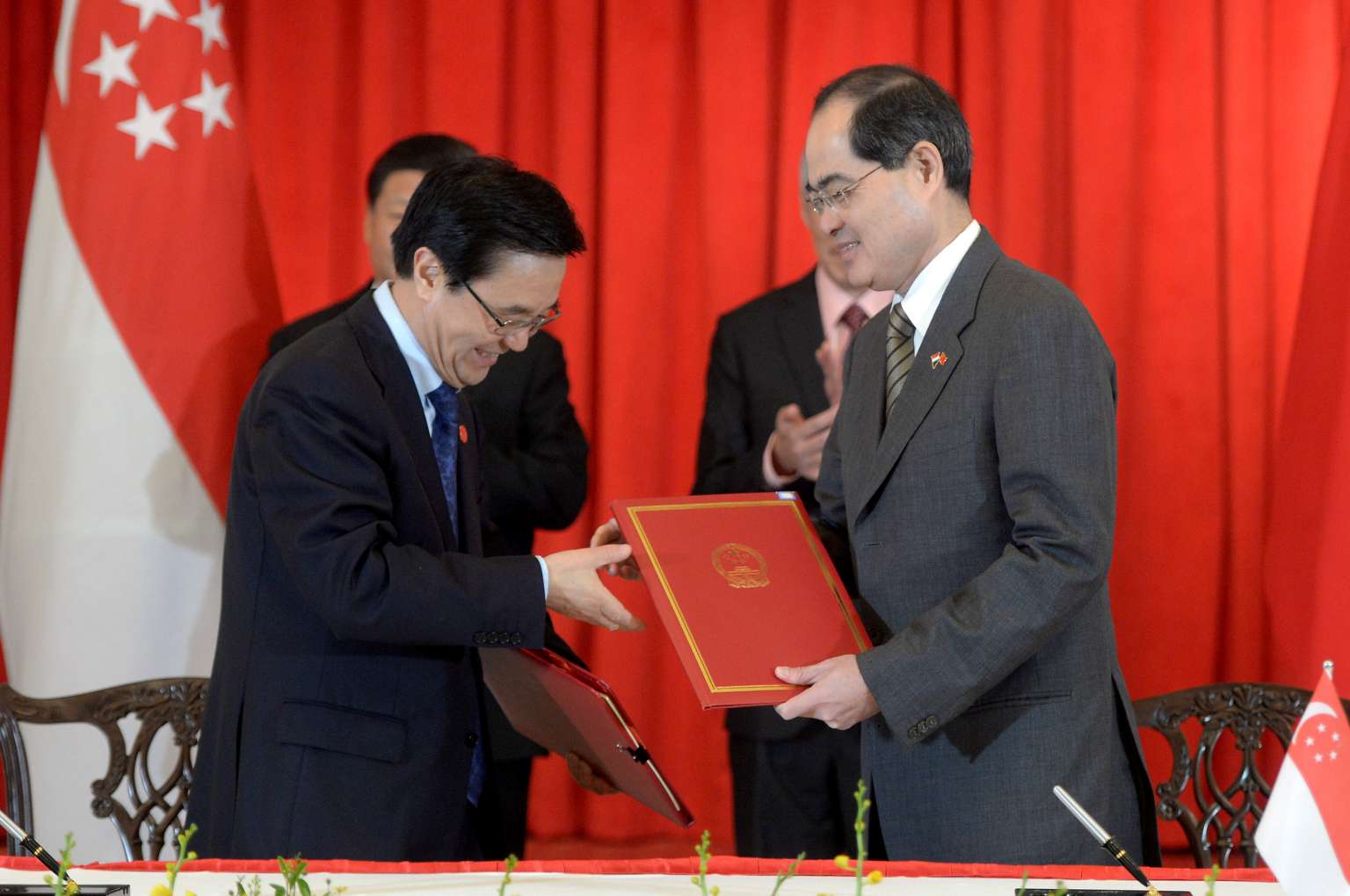
Singapore’s Minister for Trade and Industry Lim Hng Kiang (right) and China’s Minister of Commerce Gao Hucheng exchanging documents to officially launch negotiations to upgrade the China-Singapore free trade agreement at the Istana on Nov 7.
ST FILE PHOTO
Chong Zi Liang
Follow topic:
With 20 free trade agreements (FTAs) under its belt over the past 22 years, Singapore clearly has been finding such pacts useful long before they hit the headlines recently.
But what are the advantages of such agreements?
One expert describes the benefits as a case of "using your noodle".
Already, in the Asia-Pacific alone, there are about 150 trade agreements, both regional and bilateral, notes Asia-Pacific Economic Cooperation (Apec) secretariat executive director Alan Bollard. Apec, of which Singapore is a member, seeks consensus on promoting free trade in the region.
Mr Bollard adds: "It's a big complicated noodle bowl full of all these agreements."
Where does his organisation fit in that noodle bowl? "I see Apec as a test kitchen for cooking new noodles or new recipes," he says.
Apec complements the FTAs because, as it works without formal, legal set-ups, economies are more willing to try riskier approaches knowing they can exit a position.
It was not long ago that observers thought sweeping global deals were dead in the water.
The World Trade Organisation's Doha Round, named after where the first meetings took place in 2001, aimed to lower tariffs globally. But negotiations broke down in 2008 and have stalled ever since.
Just days before the Trans-Pacific Partnership was agreed on, there was pessimism about whether the 12 countries could resolve seemingly intractable differences on sectors such as pharmaceuticals and agriculture.
But they managed in the end to pull off the biggest free trade deal in history that covers 40 per cent of the world economy.
Being a part of such free trade pacts has a "strong signalling effect" that Singapore is open for business, say observers, including National University of Singapore economics associate professor Davin Chor.
"For example, after the US-Singapore FTA came into force in 2003, this really helped to cement our position as a natural location of choice in the region for US firms looking to set up a presence in this part of Asia," he says.
Such a strategy is a must, given that Singapore is an open economy which bases its growth on global trade. As it already has low import and export barriers, it is to its advantage to commit major trading partners to dropping their own tariffs, say economists and business leaders.
"Even though Singapore already has low tariffs across many goods, FTAs still help the Singapore economy by committing our FTA partners to reduce their tariff rates and other barriers to trade in their international transactions with Singapore," says Prof Chor.
This ensures that Singapore businesses get a similar reception that foreign firms receive when they come here.
As such, FTAs have been shown to boost exports from Singapore to countries that it concluded agreements with, says SIM University senior lecturer Walter Theseira.
"FTAs thus enhance our export competitiveness further, and should be good for our local businesses that have significant foreign trade links," he adds.
For instance, since the China-Singapore pact came into force in 2009, bilateral trade has increased by 33 per cent to reach $120 billion last year, figures from the Ministry of Trade and Industry show.
China is now Singapore's largest trading partner and the island has been China's largest foreign investor since 2013.
Singapore also became China's third-largest trading partner and largest overseas direct investment destination in Asean in 2014.
During Chinese President Xi Jinping's visit to Singapore last weekend, both countries launched talks to upgrade their FTA to deepen cooperation in areas such as legal and financial services.
Singapore signed its first FTA under the Asean Free Trade Area in 1993 and inked a free trade pact with New Zealand in 2000, its first with an individual country.
Today, it has FTAs with countries in North and South America, Europe, East and South Asia, and the Middle East.

